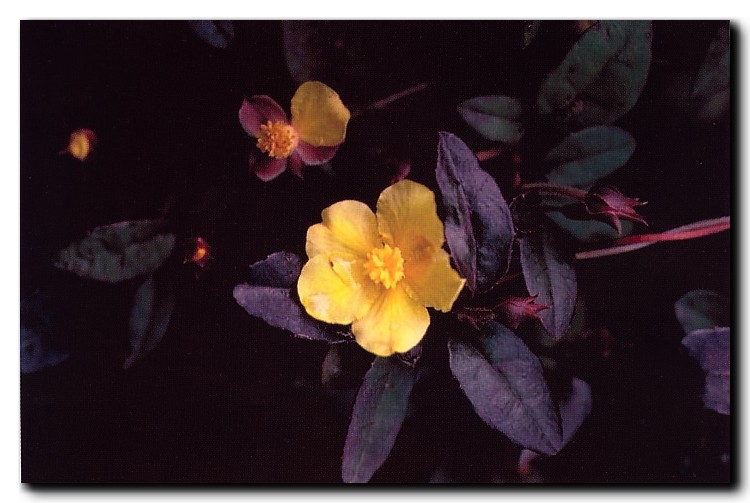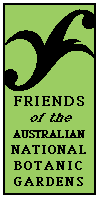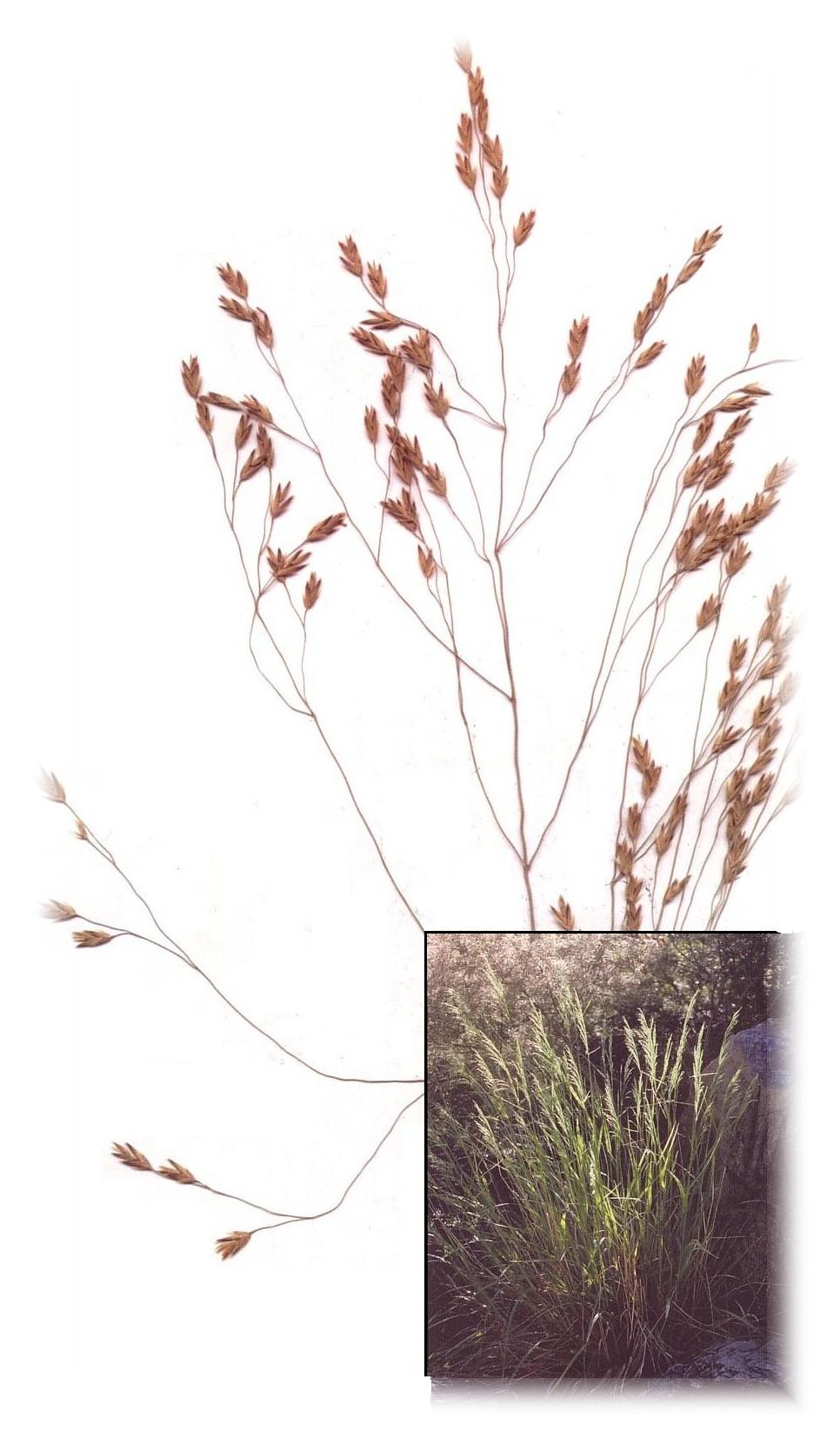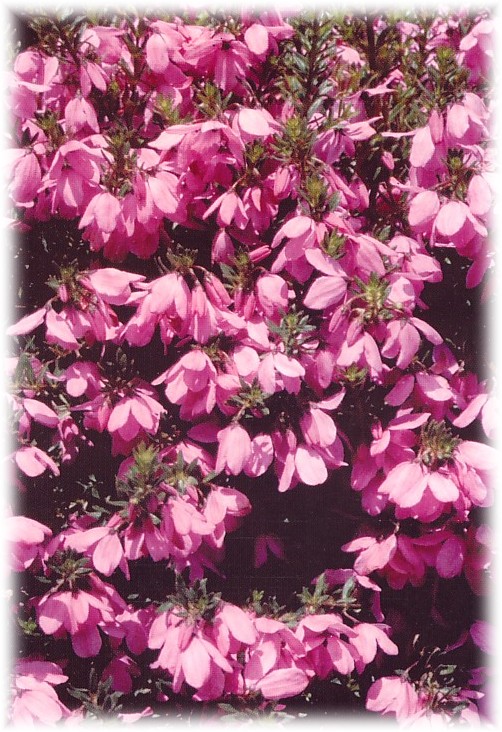The
ANBG Sydney Basin area evokes wonderful memories of my childhood near
Oatley Park on the Georges River, south of Sydney, and picnics to the
Royal National Park and the Blue Mountains.
The
Sydney Basin garden is located just below the Nursery. In the 1980's
this area had lots of Angophora costata and pea flowers, and
some years later when the dreaded Armillaria luteobubalina, a
fungal root parasite, struck, the trees died and they had to be cleared
along with the pea undergrowth. A sign on the main path gives some facts
about this invasive fungus.
Sifting through
the Gardens' Library archives, I read that in 1991 discussions were
held on how to improve the Sydney Basin area. From a report by Peter
Shumack, March 1991 : "It was decided to make a field collecting
trip to the Blue Mountains and that scientific botanical collecting
be combined with landscape aesthetics and ecological habitat investigation."
The trip was made by Andrew Lyne, chief field botanist, Gino Corsini,
horticulturalist, and Peter Shumack, landscape designer. This was just
one of numerous collecting trips made by Gino, who looks after this
garden
 Hibbertia
dentata
Photo by D.
Greig
Hibbertia
dentata
Photo by D.
Greig
|
With a picnic lunch,
camera, binoculars, lens, sketchbook and dictionary of botanical names,
let's begin on the north side of the gully and take the tanbark path
at Section 191k Budawangs. The garden is rambly, tangly, cool and private
and a great place on a hot day. The large yellow flowers of Hibbertia
dentata clamber over and under everything, forming an interesting
yellow spotted carpet. Doryanthes excelsa, Gymea Lily, and Cyathea
australis, Rough Tree-fern, line the gully. The eye-catching red
and white tubular flowers of Epacris longiflora straggle here
and there. Acacia bulgaensis, Bulga Wattle (from the Bulga district
of central coastal NSW), should be a picture in early December.
While passing the
Angophora costata feel the cool smooth bark. These trees are
similar to eucalypts but without the operculum, the cap covering the
flower bud. Platylobium obtusangulum and Bossiaea lenticularis
are two of the peas in flower nearby.
|

Ceratopetalum
gummerifum,
the NSW Christmas Bush
Photo by D. Greig
|
Past the sandstone
steps descending to the little creek and past the Ceratopetalum gummerifum,
New South Wales Christmas Bush, is a wooden bench where one can sit
and look through the tree ferns to where Platycercus elegans, the
Crimson>Rosellas, bathe. Ceratopetalum gummiferum was nearly
wiped out in the early 1800's when Prince Albert, consort of Queen Victoria,
introduced the decorating of a tree at Christmas from Germany to England,
thence to Australia. By 1860 C. gummiferum had been harvested
so extensively for Christmas decoration that efforts had to be made
to preserve it in the wild.
Also near the bench,
the waratahs, Telopea speciosissima (Telopea meaning able to
be seen from afar), display their bold red flowers and further up the
path a large old Banksia serrata shows its scarred knobbled bark.
Across the track
and onto the paved path in Section 191d Wet Forest can be found the
scattered chewed fruits of Hakea constablei. Calyptorhynchus
funereus, the Yellow-tailed Black Cockatoos, homeless from the January
fires, have found plenty to eat in the Gardens.
Next on the right
is Section 191c the Blandfordia Swamp, bordered by sandstone blocks
and clumps of Gleichenia dicarpa, Pouched Coral Fern. Blandfordia
grandiflora, Christmas Bells, will be showing their yellow-tipped
red flowers in December. There are lots of precious little plants in
this wet area, some caged to deter pesty nibblers.
The path gently
rises, coming to three Ceratopetalum apetalum, coachwoods, the
wood suitable for shaping coach wheels and tennis racquets in the past.
Then there is Ficus coronata, the Sandpaper Fig. There are not
many figs left in the wild nowadays, and so many animals and birds depend
on the fruit.
Heading down the
other side of the gully, join the serpent-like path (constructed around
1996 as part of the no-steps main path) at the circular seating which
was donated by the Friends of ANBG. Actinotus helianthi, Sydney
Flannel Flowers, with those sage-tipped bracts will be a show soon,
along with more Blandfordia grandiflora. Three large mounts of
bright green Scleranthus biflorus look like mossy cushions. Look
up this interesting Caryophyllaceae family. Most of the plantings have
labels, and according to Gino, too many, as he often gets spiked in
the rear-end when he's tending this large area (not his words!).
There is an interesting
feature lower down the path at the semi-circular wall surrounded by
Prostanthera ovalifolia, Common Mint Bush, and P. rugosa.
A small wall of fossils, 250 million years old from the Sydney Basin,
depicts leaves of the fossil seed-fern, Glossopteris. Enjoy
!!






